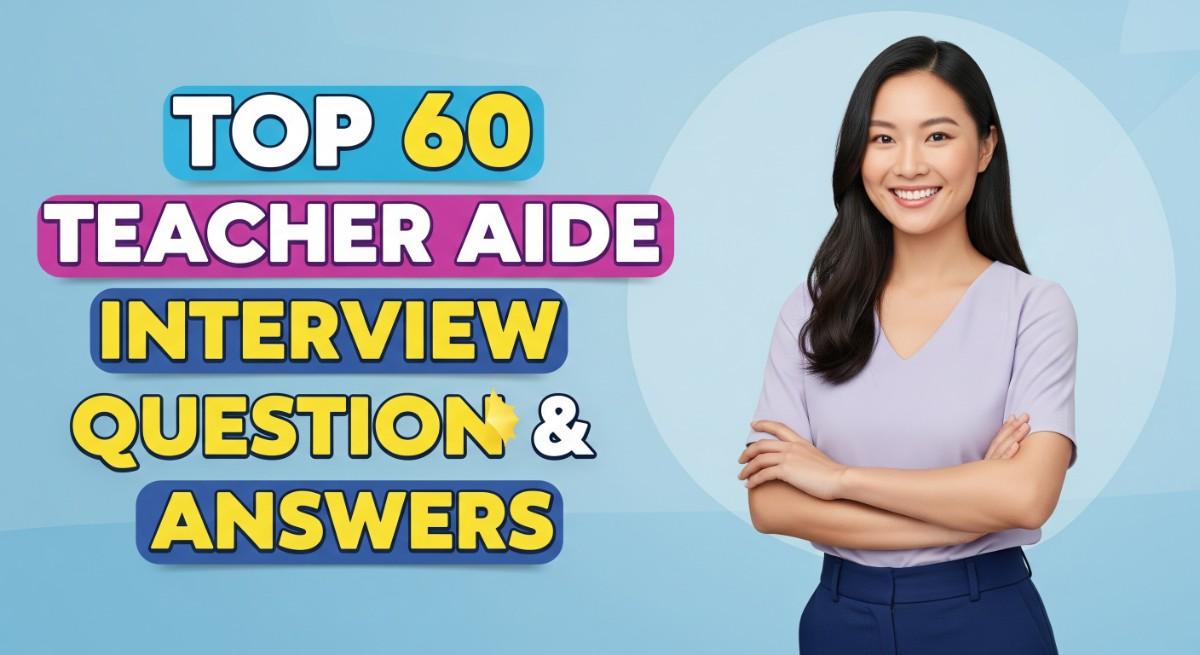
Top 62 Executive Assistant Interview Questions and Answers for 2025
Preparing for an Executive Assistant interview is a critical step in advancing your career in a role that serves as the backbone of organizational efficiency. Unique in its blend of administrative expertise, interpersonal skills, and strategic thinking, this position requires a proactive approach to problem-solving and communication. Proper interview preparation is essential, as it equips you to demonstrate your ability to manage complex schedules, facilitate high-level meetings, and handle confidential information with discretion. This comprehensive guide will cover key interview questions, essential skills, and strategies to showcase your strengths, ensuring you stand out as a top candidate for this dynamic and rewarding role.
What to Expect in a Executive Assistant Interview
In an Executive Assistant interview, candidates can expect a mix of behavioral and situational questions designed to assess organizational skills, communication abilities, and adaptability. Interviews may be conducted by HR representatives, the executive the candidate will support, or a panel of team members. The structure typically includes an introduction, a discussion of the candidate’s background and relevant experience, followed by questions that gauge problem-solving capabilities and cultural fit. Candidates may also be asked to complete practical exercises, such as calendar management or drafting emails, to demonstrate their skills in real-time.
Executive Assistant Interview Questions For Freshers
Executive Assistant interview questions for freshers focus on key skills and competencies necessary for the role. Candidates should master fundamental concepts such as time management, communication, organization, and basic office software proficiency to excel in their interviews and future job responsibilities.
1. What are the primary responsibilities of an Executive Assistant?
The primary responsibilities of an Executive Assistant typically include managing the executive’s schedule, handling correspondence, organizing meetings, and maintaining files. They often act as a liaison between the executive and other staff members or clients, ensuring effective communication and smooth operations within the office.
2. How do you prioritize tasks as an Executive Assistant?
Prioritizing tasks involves assessing urgency and importance. A good method is the Eisenhower Matrix, which categorizes tasks based on their urgency and importance. This helps in focusing on high-priority tasks first while delegating or scheduling less critical ones, ensuring the executive’s time is utilized effectively.
3. What tools or software are commonly used by Executive Assistants?
- Calendar Management Tools: Applications like Google Calendar or Microsoft Outlook help in scheduling meetings and managing appointments.
- Project Management Software: Tools like Asana or Trello assist in tracking tasks and projects.
- Communication Platforms: Tools such as Slack or Microsoft Teams facilitate effective communication within teams.
Familiarity with these tools enhances efficiency in managing tasks and communication.
Build your resume in just 5 minutes with AI.

4. Describe a situation where you had to manage a conflict in the workplace.
In managing conflict, it’s important to remain calm and objective. I would listen to both sides, understand their perspectives, and facilitate a discussion to find common ground. By focusing on solutions rather than blame, I would help to resolve the conflict and ensure a collaborative work environment.
5. How do you handle confidential information?
Handling confidential information requires discretion and adherence to company policies. I would ensure that sensitive documents are stored securely, avoid discussing confidential matters in public spaces, and only share information with authorized personnel. Regular training on data protection policies is also essential.
6. Can you explain what a typical day looks like for an Executive Assistant?
A typical day for an Executive Assistant might start with reviewing emails and prioritizing tasks. This is followed by managing the executive’s calendar, scheduling meetings, preparing agendas, and handling correspondence. Throughout the day, they may assist in project coordination and ensure that the executive is well-prepared for all commitments.
7. What steps would you take to organize a large meeting?
- Define the Purpose: Clearly outline the meeting’s objectives.
- Choose the Right Venue: Select an appropriate location or platform, ensuring it accommodates all participants.
- Prepare an Agenda: Distribute an agenda ahead of time to keep discussions focused.
- Follow Up: After the meeting, send minutes and action items to participants.
Following these steps helps ensure that meetings are productive and organized.
8. How do you ensure effective communication with your executive?
Effective communication can be ensured through regular check-ins, providing concise updates, and clarifying expectations. Utilizing tools such as shared calendars and task management software also helps in keeping both parties aligned on priorities and schedules.
9. What methods do you use to manage your time effectively?
- Creating To-Do Lists: I maintain daily and weekly lists to track tasks.
- Setting Deadlines: Assigning deadlines to tasks helps in maintaining focus.
- Using Time Blocking: Allocating specific time slots for tasks minimizes distractions and increases productivity.
By combining these methods, I can manage my time effectively and meet deadlines.
10. Describe your experience with office management.
My experience with office management includes organizing files, maintaining office supplies, and ensuring the office environment is conducive to productivity. I have also coordinated office events and implemented processes to streamline operations, which contributed to improved efficiency within the team.
11. What do you think is the most challenging aspect of being an Executive Assistant?
The most challenging aspect often involves juggling multiple tasks and priorities simultaneously. Balancing the demands of the executive while ensuring other responsibilities are managed can be stressful. Effective time management and organizational skills are critical in overcoming these challenges.
12. How would you handle a last-minute change in schedule?
To handle a last-minute change in schedule, I would quickly assess the situation, inform relevant parties, and update the calendar accordingly. Communication is key; I would ensure that everyone affected is aware of the changes to minimize disruption and maintain workflow.
13. What strategies would you use to build a rapport with your executive?
- Understanding Preferences: I would take time to learn my executive’s working style and preferences.
- Regular Communication: Maintaining open lines of communication fosters trust and collaboration.
- Being Proactive: Anticipating needs and providing support without being asked can strengthen the working relationship.
Building rapport is essential for a successful partnership and effective support.
14. How do you handle stress and pressure in the workplace?
Handling stress and pressure involves maintaining a positive mindset, practicing time management, and taking breaks when necessary. I also find that prioritizing tasks and seeking help when needed can alleviate feelings of overwhelm, allowing me to maintain productivity under pressure.
15. Why do you want to become an Executive Assistant?
I want to become an Executive Assistant because I enjoy being in a supportive role that contributes to the success of an organization. I am passionate about organization and communication, and I find fulfillment in helping executives manage their time and responsibilities effectively.
Below are some interview questions tailored for freshers applying for the Executive Assistant position. These questions cover essential skills and knowledge relevant to the role.
16. What qualities do you think are essential for an Executive Assistant?
Essential qualities for an Executive Assistant include strong organizational skills, attention to detail, effective communication abilities, and adaptability. Additionally, proficiency in office software and technology is crucial. Being proactive and possessing problem-solving skills can also greatly enhance an Executive Assistant’s ability to support executives effectively.
17. How would you prioritize tasks for an executive?
To prioritize tasks effectively, I would first assess deadlines, the importance of each task, and the executive’s preferences. I would categorize tasks into urgent vs. important, using tools like the Eisenhower Matrix. Additionally, maintaining open communication with the executive is vital to ensure alignment on priorities and expectations.
18. Can you describe your experience with office software and tools?
While I may not have extensive experience, I am proficient in common office software such as Microsoft Office Suite (Word, Excel, PowerPoint) and Google Workspace. I have utilized these tools for document preparation, data analysis, and presentations. I am also eager to learn new software tools as required by the position.
19. How do you handle confidential information?
Handling confidential information requires discretion and adherence to security protocols. I ensure that sensitive documents are stored securely, limit access to authorized personnel, and communicate confidential information only through secure channels. Understanding the importance of confidentiality is crucial in maintaining trust and integrity in the workplace.
20. Describe a time when you had to solve a problem quickly. What was the outcome?
In a previous internship, I encountered a situation where a scheduled meeting room was double-booked. I quickly assessed alternative meeting spaces and communicated with the involved parties. I managed to secure a different room and informed everyone promptly, ensuring the meeting proceeded without delays. The outcome was positive, and I learned the importance of quick thinking and flexibility.
21. What strategies do you use to manage your time effectively?
- Setting clear goals: I establish daily, weekly, and monthly objectives to maintain focus.
- Using a planner: I utilize digital calendars and to-do lists to track tasks and deadlines.
- Time blocking: I dedicate specific time slots for different tasks to minimize distractions.
Implementing these strategies has helped me stay organized and productive, allowing me to meet deadlines consistently.
22. How would you adapt to last-minute changes in an executive’s schedule?
To adapt to last-minute changes, I would remain calm and flexible, quickly reassessing priorities. I would communicate with the executive to understand any new requirements and adjust the schedule accordingly. Utilizing tools like calendar alerts and reminders can help manage changes efficiently, ensuring that all stakeholders are informed promptly.
Executive Assistant Intermediate Interview Questions
Executive Assistant interview questions for intermediate candidates focus on practical skills, organizational strategies, and the ability to handle complex tasks. Candidates should understand project management tools, communication strategies, and the nuances of calendar management to excel in their roles.
23. What tools do you use for project management and organization?
For project management and organization, I frequently use tools such as Asana, Trello, and Microsoft Project. These platforms help track tasks, set deadlines, and assign responsibilities. Additionally, I utilize Google Calendar for scheduling and time management to ensure that all deadlines are met and meetings are organized effectively.
24. How do you prioritize tasks when your supervisor has multiple requests?
When faced with multiple requests, I prioritize tasks based on urgency and impact. I assess deadlines and the importance of each task, often using a priority matrix. Communicating with my supervisor to clarify priorities ensures that I focus on what aligns best with their goals and deadlines.
25. Can you describe a time when you managed a complex calendar? What strategies did you use?
In managing a complex calendar, I implemented color-coding for different types of appointments (meetings, personal time, deadlines). I used scheduling tools to send out invites and reminders, ensuring that everyone was informed. Regularly reviewing the calendar with my supervisor helped to adjust priorities and accommodate unexpected changes.
26. How do you handle confidential information?
- Establish clear protocols: I ensure that all sensitive information is stored securely, using encrypted files or password-protected documents.
- Limit access: Only those who need to know have access to confidential information, and I regularly review who has access.
Handling confidential information requires diligence and an understanding of privacy policies to protect both the organization and individuals involved.
27. What is your approach to preparing for meetings?
My approach to meeting preparation includes several steps: I gather relevant documents, create an agenda to guide the discussion, and ensure all participants have the necessary information beforehand. Additionally, I confirm the meeting time and location, and I set reminders to keep everyone informed.
28. Describe your experience with travel arrangements.
I have extensive experience organizing travel for executives, including booking flights, accommodations, and ground transportation. I ensure that all itineraries are efficient and consider factors like budget and preferences. I also prepare travel packs that include essential documents, schedules, and contact information for easy access during the trip.
29. How do you ensure effective communication in a remote work environment?
- Utilize technology: I leverage tools like Slack and Zoom for real-time communication and updates.
- Regular check-ins: Scheduling daily or weekly check-ins with team members keeps everyone aligned.
Effective communication in a remote setting involves using the right tools and maintaining regular contact to foster collaboration and transparency.
30. Can you provide an example of a challenging project you managed?
One challenging project involved organizing a company-wide retreat. I coordinated logistics, managed a budget, and ensured that all aspects were considered, from transportation to catering. The project required meticulous planning and adaptability, but ultimately, it was a success, and the feedback was overwhelmingly positive.
31. What methods do you use to maintain your productivity?
- Time blocking: I schedule specific blocks of time for focused work, minimizing distractions.
- Regular breaks: Taking short breaks helps clear my mind and maintain energy levels throughout the day.
Maintaining productivity involves strategically managing time and ensuring that I stay refreshed and focused on tasks at hand.
32. How do you deal with difficult personalities in the workplace?
When dealing with difficult personalities, I focus on maintaining professionalism and empathy. I try to understand their perspective and communicate openly. If conflicts arise, I aim to address them directly but tactfully, seeking a resolution that respects all parties involved.
33. What experience do you have with budgeting and financial tracking?
I have experience managing budgets for projects, including tracking expenses and ensuring that spending stays within limits. I use spreadsheets and financial software to monitor costs and prepare reports. This ensures transparency and accountability in financial matters.
34. How do you keep up with industry trends relevant to your role?
- Continuous learning: I regularly read industry-related articles, attend webinars, and participate in professional networks.
- Networking: Engaging with other professionals allows me to exchange knowledge and insights on best practices.
Staying updated on industry trends is crucial for adapting to changes and implementing best practices in my role.
35. Describe a time when you had to adapt quickly to a change.
During a major project, the scope changed significantly at the last minute. I quickly reassessed priorities, communicated with stakeholders about the new direction, and adjusted the project timeline accordingly. By remaining flexible and proactive, I was able to keep the project on track despite the challenges.
36. What role does technology play in your daily responsibilities?
Technology plays a crucial role in my daily responsibilities by streamlining tasks and enhancing communication. I use various software tools for scheduling, document management, and project tracking. Staying proficient with technology allows me to work efficiently and adapt to new tools that can improve productivity.
37. How do you ensure a positive working relationship with your supervisor?
To ensure a positive working relationship with my supervisor, I prioritize clear communication and set regular check-ins to discuss priorities and feedback. I also strive to anticipate their needs and provide proactive support. Building trust and understanding their preferences enhances our collaboration.
Below are some intermediate-level interview questions tailored for Executive Assistants, focusing on practical applications, best practices, and real-world scenarios.
38. What strategies do you use to manage conflicting priorities in a busy work environment?
To effectively manage conflicting priorities, I employ several strategies: first, I assess the urgency and importance of each task using the Eisenhower Matrix. This helps me prioritize effectively. Next, I communicate with stakeholders to set clear expectations and negotiate deadlines when necessary. I also utilize digital tools like task management software to organize my workload and keep track of progress. Lastly, I regularly review and adjust my priorities as needed to remain flexible and responsive to changing demands.
39. Can you describe your experience with calendar management for executives?
I have extensive experience managing calendars for executives, which includes scheduling meetings, appointments, and travel arrangements. I prioritize requests based on urgency and importance, ensuring that my executive’s time is used efficiently. I also anticipate potential scheduling conflicts and proactively seek solutions. Additionally, I maintain a balance between work commitments and personal time to avoid burnout and ensure my executive remains productive and focused.
40. How do you handle confidential information in your role?
- Data Protection: I adhere to company policies regarding data protection and confidentiality, ensuring that sensitive information is only shared with authorized individuals.
- Secure Communication: I use secure communication channels for sharing confidential information and avoid discussing sensitive topics in public or unsecured environments.
- Documentation: I keep physical and digital records of confidential materials organized and secure, ensuring that they are accessible only to those who need them.
By implementing these practices, I maintain the integrity of confidential information and build trust with my executive and the organization.
41. What tools and software do you find most effective for project management?
For project management, I find tools like Asana, Trello, and Microsoft Project to be highly effective. These tools allow for collaborative task management, progress tracking, and deadline notifications. I also appreciate using Google Workspace for document sharing and communication, which enhances collaboration across teams. By leveraging these tools, I can streamline workflows, ensure accountability, and keep projects on track.
42. Describe a time when you had to deal with a difficult stakeholder. How did you handle the situation?
In a previous role, I encountered a difficult stakeholder who was unhappy with the progress of a project. I scheduled a one-on-one meeting to listen to their concerns and understand their perspective. By acknowledging their feelings and providing transparent updates about the project’s status, I was able to rebuild trust. I also proposed actionable steps to address their concerns, which ultimately led to a more collaborative working relationship.
43. How do you ensure effective communication among team members?
- Regular Updates: I schedule regular team meetings to discuss updates, progress, and challenges, ensuring everyone is aligned.
- Use of Collaboration Tools: I utilize tools like Slack or Microsoft Teams to facilitate real-time communication and quick information sharing.
- Encouraging Feedback: I create an open environment where team members feel comfortable sharing their thoughts and concerns, promoting transparency and collaboration.
These practices help maintain clear communication, improve team dynamics, and ensure that everyone is working toward common goals.
44. What methods do you use to track and report on your executive’s goals and performance?
I track and report on my executive’s goals and performance using a combination of goal-setting frameworks, such as SMART goals, and regular performance reviews. I utilize project management tools to monitor progress against these goals, providing weekly or monthly reports that highlight achievements and areas for improvement. Additionally, I facilitate quarterly reviews to assess overall performance and adjust strategies as necessary to meet objectives effectively.
Executive Assistant Interview Questions for Experienced
This set of interview questions for experienced Executive Assistants explores advanced topics such as strategic planning, project management, leadership capabilities, and optimization of executive workflows. Candidates should be prepared to demonstrate their expertise in handling complex tasks and their ability to support high-level executives effectively.
45. How do you prioritize tasks when supporting multiple executives?
Prioritizing tasks for multiple executives involves assessing urgency, importance, and deadlines. I typically utilize a matrix to categorize tasks based on these criteria. Regular communication with each executive is crucial to understand their immediate needs and long-term goals, allowing me to adjust priorities as necessary. Additionally, using project management tools can help in tracking and managing tasks efficiently.
46. Can you describe your experience with project management tools?
I’ve utilized various project management tools such as Asana, Trello, and Microsoft Project to streamline workflows and enhance collaboration. These tools allow me to assign tasks, set deadlines, and monitor progress. I also use them to create shared calendars and document repositories, ensuring that all team members have access to relevant information, which improves overall efficiency.
47. How do you handle confidential information?
Handling confidential information requires strict adherence to privacy policies and protocols. I ensure that sensitive documents are stored securely, using encrypted files and password protection. When sharing information, I limit access to authorized individuals only. Additionally, I conduct regular training on confidentiality practices to ensure all team members understand the importance of protecting sensitive data.

Build your resume in 5 minutes
Our resume builder is easy to use and will help you create a resume that is ATS-friendly and will stand out from the crowd.
48. Describe a situation where you had to manage a crisis for an executive.
In a previous role, an executive faced a last-minute scheduling conflict that threatened an important client meeting. I quickly assessed the situation, communicated with all parties involved, and suggested a virtual meeting as an alternative. I also prepared the necessary materials and briefed the executive on key discussion points, ensuring the meeting proceeded smoothly despite the last-minute changes.
49. What strategies do you use to improve executive productivity?
- Task Delegation: I identify tasks that can be delegated to other team members to free up the executive’s time for high-impact decisions.
- Time Blocking: Implementing time blocks in the executive’s schedule for focused work on strategic initiatives helps minimize distractions.
- Regular Check-ins: Conducting weekly check-ins to align on priorities ensures that the executive remains focused on the most important tasks.
These strategies collectively enhance productivity and allow for better time management.
50. How do you ensure effective communication within the team?
Effective communication starts with establishing clear channels and protocols. I encourage regular team meetings to discuss ongoing projects and goals. Additionally, I utilize collaboration tools like Slack or Microsoft Teams to facilitate quick communication and updates. I also prioritize active listening and feedback to ensure that everyone feels heard and valued, which fosters a collaborative environment.
51. What is your approach to onboarding new team members?
My approach to onboarding focuses on creating a comprehensive plan that includes an introduction to the company culture, processes, and key stakeholders. I develop a schedule for the first week that includes training sessions, one-on-one meetings with team members, and hands-on practice with tools and systems. Providing a welcome package with necessary resources also helps new hires acclimate quickly.
52. How do you manage travel arrangements for executives?
Managing travel arrangements involves meticulous planning and attention to detail. I start by understanding the executive’s preferences and requirements for travel. I use travel management tools to compare flight options, accommodations, and itineraries, ensuring the best options are selected. I also prepare a detailed itinerary that includes all travel logistics, contact information, and contingency plans for any potential issues.
53. Can you discuss your experience with budget management?
In my previous roles, I have been responsible for managing departmental budgets, which involved tracking expenses, forecasting financial needs, and preparing reports for the executives. I use software like Excel or budgeting tools to ensure accuracy and transparency. Regularly reviewing the budget against actual expenses allows for effective financial planning and adherence to fiscal constraints.
54. How do you handle difficult personalities in the workplace?
Handling difficult personalities requires patience and empathy. I first try to understand their perspective and identify the root cause of their behavior. Open communication is key; I often schedule a private discussion to address any issues directly. If necessary, I involve HR to mediate conflicts and ensure a positive working environment for all team members.
55. What role does technology play in your daily tasks?
Technology plays a crucial role in enhancing my efficiency and effectiveness. I leverage various applications for scheduling, document management, and communication. Tools like Google Workspace and Microsoft Office streamline collaboration, while automation tools help reduce repetitive tasks. Staying updated with the latest technology trends allows me to implement new solutions that benefit the executive’s workflow.
56. How do you approach goal setting for yourself and your team?
- SMART Goals: I ensure that all goals are Specific, Measurable, Achievable, Relevant, and Time-bound to provide clear targets.
- Regular Reviews: I conduct regular review sessions to assess progress and realign goals as needed to adapt to changing circumstances.
- Feedback Mechanism: Encouraging team members to provide input on goal setting fosters ownership and accountability.
This structured approach helps in maintaining focus and achieving desired outcomes.
57. Describe your leadership style and how it impacts your role.
My leadership style is collaborative and supportive. I believe in empowering team members by fostering an environment where their contributions are valued. I actively encourage open communication and provide guidance when needed, allowing team members to take ownership of their roles. This approach not only boosts morale but also enhances productivity and innovation within the team.
58. How do you keep yourself organized in a fast-paced environment?
Staying organized in a fast-paced environment involves using effective organizational tools such as digital calendars, task management systems, and priority lists. I prioritize tasks daily based on deadlines and importance, and I regularly review my schedule to accommodate any changes. Additionally, I make it a point to declutter my workspace, which helps maintain focus and efficiency.
59. How do you manage competing priorities from different executives?
Managing competing priorities requires exceptional organizational skills and clear communication. I maintain an updated overview of each executive’s priorities and deadlines. Regularly scheduled check-ins help clarify which tasks are most critical. When conflicts arise, I discuss the situation with the executives to negotiate timelines and find a mutually agreeable solution that accommodates everyone’s needs.
60. What methods do you use for effective meeting management?
- Agenda Preparation: I create detailed agendas and share them in advance to ensure all participants are prepared.
- Time Management: I set strict time limits for each agenda item to keep discussions focused and efficient.
- Follow-Up: I distribute minutes and action items after the meeting to ensure accountability and track progress.
These methods enhance the productivity and effectiveness of meetings, ensuring that objectives are met.
These questions are tailored for experienced candidates applying for the role of Executive Assistant, focusing on their skills in organization, communication, and leadership in a corporate environment.
60. How do you prioritize tasks when supporting multiple executives?
Prioritizing tasks for multiple executives requires a clear understanding of their individual needs and urgency levels. I typically employ a system that includes assessing deadlines, the impact of tasks on business objectives, and feedback from each executive. Using tools like a priority matrix can help categorize tasks into quadrants based on urgency and importance, allowing me to allocate my time and resources effectively. Additionally, regular check-ins with executives ensure alignment on priorities.
61. Can you describe a situation where you had to manage a conflict between team members?
In a previous role, I encountered a conflict between two team members over project responsibilities. I facilitated a meeting where both could express their concerns. I guided the conversation towards finding common ground by encouraging them to focus on shared goals. By brainstorming solutions together, we established clearer roles and responsibilities that both parties agreed upon. This not only resolved the conflict but also enhanced collaboration going forward, demonstrating the importance of open communication and mediation skills.
62. What strategies do you use to ensure effective communication across different departments?
- Regular Updates: I implement weekly or bi-weekly updates via email or team meetings to keep everyone informed about ongoing projects and changes.
- Collaboration Tools: Utilizing tools like Slack or Microsoft Teams facilitates real-time communication and allows for easy sharing of documents and information.
- Feedback Loops: I establish feedback mechanisms to ensure that communication is two-way, allowing team members to share their thoughts and suggestions freely.
By employing these strategies, I create an environment where information flows smoothly across departments, resulting in improved collaboration and efficiency.
How to Prepare for Your Executive Assistant Interview
Preparing for an Executive Assistant interview requires a strategic approach to demonstrate your organizational skills, communication abilities, and critical thinking. Understanding the role’s demands and showcasing relevant experiences can set you apart from other candidates.
Research the Company: Familiarize yourself with the company’s mission, values, and culture. Understand its industry position and recent news to speak knowledgeably about how you can contribute as an Executive Assistant.
Understand the Role: Review the job description carefully. Identify key responsibilities and required skills, then prepare examples from your past experiences that align with these requirements to showcase your suitability for the role.
Practice Common Interview Questions: Prepare answers for typical Executive Assistant interview questions, such as handling conflicting priorities, managing schedules, and maintaining confidentiality. Use the STAR method (Situation, Task, Action, Result) for structured responses.
Highlight Organizational Skills: Be ready to discuss your organizational techniques. Prepare to share specific tools or methods you use for task management, scheduling, and project coordination, emphasizing efficiency and accuracy.
Showcase Communication Abilities: Effective communication is crucial. Prepare examples demonstrating your skills in both verbal and written communication, such as drafting emails, reports, and handling sensitive information with discretion.
Demonstrate Tech Proficiency: Familiarize yourself with software commonly used by Executive Assistants, such as Microsoft Office Suite, Google Workspace, and project management tools. Be ready to discuss your experience and comfort level with these technologies.
Prepare Questions for the Interviewer: Develop thoughtful questions to ask the interviewer about the team dynamics, expectations for the role, and opportunities for growth. This demonstrates your interest in the position and helps you assess fit.
Common Executive Assistant Interview Mistakes to Avoid
When interviewing for an Executive Assistant position, avoiding common mistakes can significantly improve your chances of success. Understanding the nuances of the role and demonstrating your skills effectively is crucial for making a positive impression.
- Lack of Research: Failing to research the company and its executives can indicate a lack of interest. Understanding the company’s culture, mission, and recent developments helps you tailor your responses and demonstrate your enthusiasm for the role.
- Poor Communication Skills: As an Executive Assistant, strong communication is essential. Inability to articulate your thoughts clearly or respond professionally can create doubts about your suitability for the position.
- Neglecting to Highlight Relevant Experience: Focusing on unrelated job experiences may lead interviewers to question your qualifications. Emphasize your specific skills and experiences that are directly relevant to the responsibilities of an Executive Assistant.
- Not Asking Questions: Failing to ask insightful questions can suggest a lack of engagement. Asking about team dynamics or executive expectations shows your interest in the role and helps you assess fit.
- Inadequate Preparation for Behavioral Questions: Not preparing for behavioral questions can lead to vague answers. Use the STAR method (Situation, Task, Action, Result) to provide structured and impactful responses that showcase your competencies.
- Overlooking Professional Appearance: Dressing inappropriately can create a negative first impression. Aim for a polished and professional appearance that aligns with company culture to reflect your understanding of workplace expectations.
- Being Unfamiliar with Technology: Executive Assistants often use various software and tools. Lack of familiarity with essential technologies can suggest you may struggle with daily tasks, so be prepared to discuss your technical skills.
- Failure to Demonstrate Adaptability: The role often requires juggling multiple tasks and priorities. Not showcasing your adaptability and ability to handle unforeseen challenges may lead interviewers to doubt your capability to thrive in a dynamic environment.
Key Takeaways for Executive Assistant Interview Success
- Thoroughly prepare your resume using an AI resume builder to highlight relevant skills and experience effectively, ensuring it stands out among applicants.
- Utilize structured resume templates to maintain clarity and organization, making it easy for hiring managers to quickly assess your qualifications.
- Showcase your professional background with tailored resume examples that reflect your accomplishments and align with the responsibilities of an Executive Assistant.
- Craft personalized cover letters that convey your enthusiasm for the role and demonstrate your understanding of the organization’s needs and values.
- Engage in mock interview practice to build confidence and refine your responses, ensuring you effectively communicate your skills and experiences during the actual interview.
Frequently Asked Questions
1. How long does a typical Executive Assistant interview last?
A typical Executive Assistant interview can last anywhere from 30 minutes to an hour. This duration allows the interviewer to assess your skills, experience, and fit for the role while giving you time to ask questions about the position and company culture. Be prepared for a mix of behavioral and situational questions, and ensure you convey your organizational and communication skills effectively within this timeframe.
2. What should I wear to a Executive Assistant interview?
For an Executive Assistant interview, it is advisable to dress in professional business attire. Opt for a tailored suit or a conservative dress paired with closed-toe shoes. Choose neutral or soft colors to convey professionalism while avoiding overly flashy accessories. Dressing appropriately not only reflects your understanding of the corporate environment but also demonstrates your respect for the interviewer and the organization you’re aspiring to join.
3. How many rounds of interviews are typical for a Executive Assistant position?
Typically, there are two to three rounds of interviews for an Executive Assistant position. The first round may involve an initial phone or video screening, followed by one or two in-person interviews. The later rounds often include meetings with senior executives or team members to assess your fit within the organization. Each round is an opportunity for both you and the employer to evaluate mutual compatibility.
4. Should I send a thank-you note after my Executive Assistant interview?
Yes, sending a thank-you note after your Executive Assistant interview is highly recommended. It not only expresses your gratitude for the opportunity to interview but also reinforces your interest in the position. A well-crafted thank-you note reflects your professionalism and attention to detail, which are essential traits for an Executive Assistant. Aim to send it within 24 hours of the interview, and personalize it by mentioning specific discussions from your meeting.











